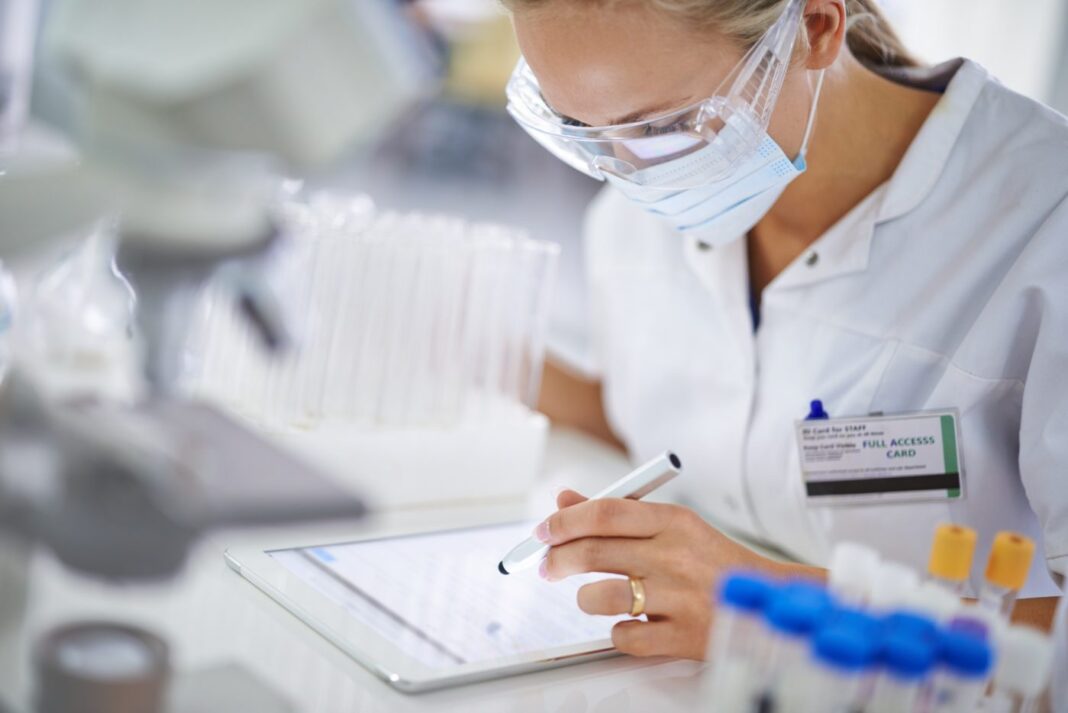By Javier Fraile

Fisher Scientific
Collecting specimens is an age-old pursuit, one that occupied no less a scientist than Charles Darwin. Back in 1831, he traveled across the world to collect samples of strange and rare species. Today, his unique sample collection is carefully housed in the Natural History Museum in London, England, along with its data and metadata in the form of meticulous logbooks. All this material demonstrates the importance of collecting, documenting, and storing living tissues. In Darwin’s case, these activities formed the basis of our modern knowledge of genetics and biological inheritance. Now these activities occupy biobanks.
Early biobanks were private sample collections built with a specific purpose. Modern biobanks, on the other hand, are large-scale operations that fuel countless biological and medical research studies. Small or large, every biobank holds untapped potential and unknown possibilities. As biobanks have evolved over the years, they have invested in better infrastructure and equipment to protect the valuable samples under their care. However, while focusing on sample upkeep, most biobanks have failed to invest in data management solutions. This has resulted in an overreliance on manual processes that segregate data records and pack them into silos. These tedious practices entail operational inefficiencies, quality issues, and escalating costs that prevent many biobanks from reaching their true potential.
Modern super-biobanks face unique challenges
Unlike the evolution of species described by Darwin, the evolution of the biobank has been fast-paced. The sector has exploded to meet the emerging demands of cutting-edge fields, such as personalized medicine, cell and gene therapy, proteomics, and genomics. This rapid advancement has seen some super-biobanks expand to contain millions of samples.
Each biorepository is unique, from its contents to its organizational structure. And unlike the solely private enterprises of the past, modern biorepositories include government-funded projects, nongovernment organizations, and commercial operations. We are even starting to see the emergence of virtual biobanks that provide an interface to search many interconnected repositories. Despite their unique points, most modern biobanks share common themes. For example, most modern biobanks are dynamic organizations that see samples flow in and out daily.
In addition to sample diversity, the associated data and metadata are also becoming increasingly complex. Data about matters such as informed consent, patient history, and intended use commonly need to be stored along with the samples, influencing how, when, and by whom the samples can be accessed and used. To safely store samples and meet quality and regulatory standards, the chain of custody must be robust, fully understood, and documented. This means comprehensive tracking of a sample’s end-to-end journey, from submission to storage and eventual shipping.
Biobanks face these challenges in their day-to-day operations, but they are not solely built for the research of today. Stored samples will likely be used in ways that we can’t anticipate; that is, they will be used in future research and evaluated with techniques that have yet to be developed. This means that biobanks must be future-proofed. Specifically, they must have the technology in place to create automated and robust systems that will be best placed to integrate with the technology of tomorrow.
From Laboratory 4.0 to Biobank 4.0
Many biobanks have already implemented the infrastructure needed to accurately submit, sort, store, and ship samples, as and when required. But while this physical investment has been made, investment in data management systems to support this infrastructure has been lacking.
Cutting-edge equipment used in biobanks, such as smart cryogenic storage systems, automated capping and decapping systems, and high-speed barcode scanners, are often designed to comply with Laboratory 4.0 principles, which call for next-generation laboratories to combine digitalization with automation. Laboratory 4.0-standard equipment promises fewer manual tasks and offers cost- and time-effective operations.
However, investing in Laboratory 4.0-standard equipment without adopting smart connectivity, automation, and machine learning capabilities restricts the return on investment. Put simply, biobanks that imbibe the Laboratory 4.0 principles—along with digitalized data management—will start utilizing the full capabilities of their technology today and have the potential to leverage big data in the future.
Lifting limitations through LIMS
Laboratory information management systems (LIMS) have revolutionized laboratories, providing a centralized, single source of truth for all data associated with samples, equipment, workflows, and instruments. LIMS break the data silos of the past to increase efficiencies and enable automated workflows. Through investment in these systems, many laboratories experience time savings, reduced costs, and improved quality standards.
The story is very different in the biobanking industry. Many have been slow to invest in LIMS, instead continuing to rely on manual processes to submit, track, and monitor samples. Despite the clear benefits offered by LIMS, uptake by biobanks has been slow—and understandably so. LIMS typically haven’t accommodated the specific capabilities required by this sector.
Standard LIMS require considerable investment, and when they don’t quite fit biobanking requirements, securing procurement funds and justifying running costs can become challenging. With standard LIMS, biobank teams often require extensive training, and when large elements of a LIMS go unused, the return on investment remains unrealized.
How to choose the best LIMS for your biobank
Responding to the growing demands of the fast-evolving biobanking industry, developers are now releasing biobank-specific LIMS. However, the available systems vary widely in their capability, usability, and future-proofing potential. When a biobank-specific LIMS is being chosen, several elements should be considered. The most important ones are discussed in the following subsections.
Automation: The foundation of Laboratory 4.0 is automation. Once it is in place, it supports the elimination of tedious, error-prone manual tasks. A LIMS should eliminate or automate as many manual tasks as possible so that sample entry, processing, retrieval, and shipping may proceed more quickly and reliably.
At a minimum, the LIMS should automatically generate unique codes and print barcodes, ensuring that samples are tracked throughout their journey into, through, and out of the biobank. This end-to-end tracking using automation provides biobanks with a digital chain of custody. By applying the unique codes, the LIMS records who added or removed a sample, as well as the action’s time and the location. This tracking can then extend into shipping and continue until the sample reaches its destination.
Integration with existing workflows: Point solutions developed for highly specialized functions in the biobank are sometimes incompatible with existing technology or software and cannot be integrated with the workflow. With connectivity at their core, LIMS tailored for biobanks ensure integration without compromising on specific functionality.
Not only can LIMS integrate with other data systems, such as hospital information management systems or electronic laboratory notebooks, but they also interface seamlessly with smart instruments, which typically include storage and monitoring devices. As a result, samples can be closely monitored, and incidents such as power outages or equipment breakdowns can be traced to the individual samples involved, thereby increasing quality standards.
Simplified, easy-to-use interface: It takes less time and money to train personnel on easy-to-use systems. When operators understand a system and see its value, new workflows are adopted faster.
Accordingly, biobanks should be choosing LIMS with simple user interfaces that include only relevant information. Dashboards should be configurable to provide an overview of the entire biobank repository. Having a real-time, top-level snapshot as well as the option to drill into details can help managers resolve sample capacity issues. Specifically, these capabilities help managers spot available space and review storage conditions.
Driving high quality and regulatory compliance: Tailored, fit-for-purpose LIMS help biobanks reach optimal quality standards. Parameters that directly influence sample viability, such as freeze-thaw cycles and time spent out of cold storage, can be tracked throughout the chain of custody, and they can enable the customization of automatic alerts. Having records of these critical quality parameters ensures that samples and sample handling practices comply with regulatory requirements. From the outset, LIMS should demonstrate good practice (GxP) guidelines. As regulatory standards change, LIMS should adapt to meet them.
Developed for the real world with an eye to the future: Before investing in LIMS, biobanks should ask to view a real-world demonstration, whether it is at another biobank or an integrated test site. LIMS providers should also have a pipeline of planned upgrades and future releases to respond to the changing regulatory landscape. Forward-thinking LIMS developers will have a detailed understanding of the industry and its challenges. Accordingly, they will have the ability to respond promptly as biobanking needs evolve.
Using LIMS to drive Biobank 4.0
With future medical research and biotherapeutic development relying on the samples contained within biobanks today, there is little room for errors and inefficiencies caused by manual tasks and siloed data management. Despite rapid growth, biobanks have yet to embrace data practices that maximize efficiencies and fully safeguard sample quality.
Biobank-tailored LIMS incorporate all the benefits associated with Laboratory 4.0 principles. By applying these principles, LIMS help create the next generation of biobanks through (1) digitalization (establishing a central repository for all data and permitting access to data-related insights); (2) automation (allowing scientists to concentrate on value-added activities instead of tedious manual tasks); and (3) connectivity (bringing together all data, equipment, infrastructure, samples, and people in one system).
By choosing easy-to-use and future-proofed LIMS that give an overview of a sample’s entire journey, biobanks will ensure that samples will remain protected and reach researchers quickly and easily. The improved cost and time efficiencies delivered through LIMS will enable biobanks to continue to grow, further expanding the usefulness of the highly valuable information they contain.
Javier Fraile is digital science solutions manager at Thermo Fisher Scientific.





